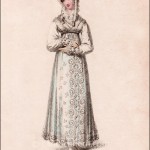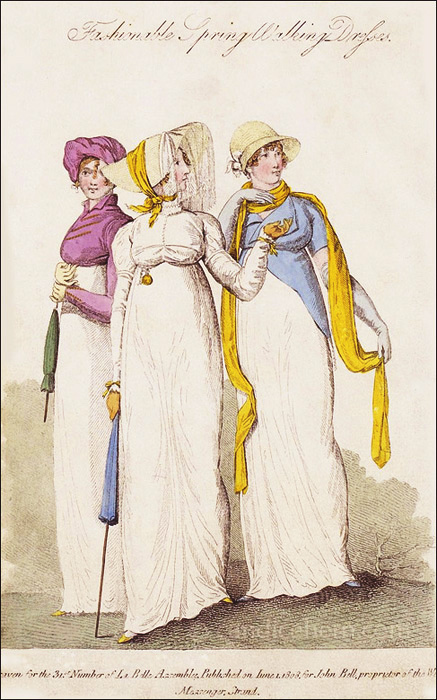Ackermann’s Repository of Arts, October 1814.
“Walking Dress.”
The high crowned bonnet is typical of 1814. It is cited in the text as a Shipton bonnet. Apparently it was named after Mother Shipton, a 16th century soothsayer and prophetess, who became a popular figure of pantomime during the early 19th century. An 1804 print, based on a much earlier painting, shows Mother Shipton in a broad-brimmed hat.
By this time, ladies had figured out that the long skirts of walking dresses of the previous decade resulted in dirty hems, and we see shorter hems in this period, often called “a walking length.” Even so, the hemline here is likely shorter than actual walking dresses of the time. I suspect some of these shorter hems in prints are meant to show off the shoes.
The shoes here are called sandals, which at this time simply meant that they laced up over the ankle. They look charming, even if shown on impossibly tiny feet!
Note the reticule (called ridicule at this time) held in her hand.
The print is described in the magazine as follows:
“An evening primrose-coloured French sarsnet petticoat, trimmed round the bottom with a double row of clear muslin, drawn full with a narrow ribband of corresponding colour to the petticoat; high body [ie bodice] of jaconet muslin, with reversed drawings; long sleeve, drawn to correspond. A silk ruff. A silk net handkerchief-sash, tied in streamers and small bows behind. A Shipton straw bonnet, tied under the chin with a net handkerchief crossing the crown, and trimmed with a band of the same silk net. Sandals of evening primrose-coloured silk. Gloves to correspond.”








